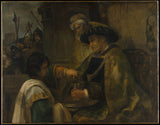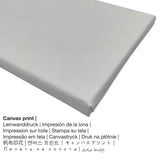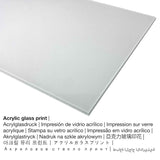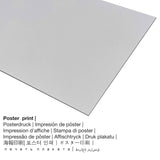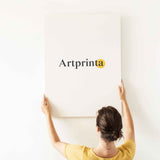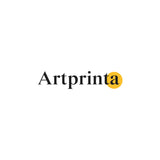Rembrandt van Rijn, 1660 - Pilate Washing His Hands - fine art print
Tax included. Shipping calculated at checkout.
Summary of the print product
Pilate Washing His Hands is a work of art painted by the painter Rembrandt van Rijn. The more than 360 year-old original was painted with the following size: 51 1/4 x 65 3/4 in (130,2 x 167 cm) and was manufactured on the medium oil on canvas. Besides, the piece of art is in the the art collection of The Metropolitan Museum of Art, which is one of the world's largest and finest art museums, which includes more than two million works of art spanning five thousand years of world culture, from prehistory to the present and from every part of the globe.. The classic art artpiece, which is part of the public domain is being provided with courtesy of The Metropolitan Museum of Art, New York, Bequest of Benjamin Altman, 1913. The creditline of the artwork is: Bequest of Benjamin Altman, 1913. In addition to that, the alignment is landscape with a side ratio of 4 : 3, which implies that the length is 33% longer than the width. The painter Rembrandt van Rijn was a European artist from the Netherlands, whose art style can primarily be assigned to Baroque. The Baroque artist lived for 63 years, born in 1606 in Leiden and deceased in the year 1669.
Choose your product material
For every art print we offer a range of different materials and sizes. We allow yout to choose among the following variants:
- Aluminium dibond: These are metal prints on aluminium dibond material with an impressive depth effect. A direct Direct Print on Aluminum Dibond is the excellent start to art prints with aluminum. For our Direct Aluminium Dibond print, we print your selected artpiece right on the surface of the white-primed aluminum composite.
- The canvas print: A canvas print is a printed canvas mounted on a wood stretcher. Canvas prints are relatively low in weight, meaning that it is easy and straightforward to hang up the Canvas print without additional wall-mounts. A canvas print is suited for any kind of wall.
- Printed poster (canvas material): The poster print is a printed sheet of canvas with a slight surface structure, which resembles the actual version of the masterpiece. It is ideally suited for putting the art print with the help of a special frame. Please note, that depending on the size of the poster we add a white margin between 2-6cm around the painting in order to facilitate the framing.
- Acrylic glass print: A glossy print on acrylic glass, often referenced as a plexiglass print, will convert your favorite original work of art into brilliant home decoration. Your favorite artwork is being manufactured with the help of modern UV print technology. This makes rich and sharp color shades. The great advantage of a plexiglass fine art print is that sharp contrasts plus small details will be recognizeable thanks to the subtle tonal gradation. The real glass coating protects your selected art print against sunlight and heat for many decades.
Legal disclaimer: We try everythig possible to depict the products as accurately as possible and to display them visually in our shop. However, the pigments of the print materials and the print result may vary marginally from the presentation on the device's monitor. Depending on your settings of your screen and the nature of the surface, not all color pigments are printed as realistically as the digital version on this website. Given that all our art reproductions are processed and printed manually, there may also be minor differences in the size and exact position of the motif.
Item table
| Print product type: | wall art |
| Reproduction method: | digital reproduction |
| Manufacturing method: | UV direct print (digital printing) |
| Product Origin: | manufactured in Germany |
| Stock type: | production on demand |
| Intended product usage: | home design, wall art |
| Image alignment: | landscape alignment |
| Aspect ratio: | 4 : 3 (length : width) |
| Aspect ratio meaning: | the length is 33% longer than the width |
| Fabric variants: | acrylic glass print (with real glass coating), canvas print, poster print (canvas paper), metal print (aluminium dibond) |
| Canvas on stretcher frame (canvas print) size variants: | 40x30cm - 16x12", 80x60cm - 31x24", 120x90cm - 47x35", 160x120cm - 63x47" |
| Acrylic glass print (with real glass coating): | 40x30cm - 16x12", 80x60cm - 31x24", 120x90cm - 47x35", 160x120cm - 63x47" |
| Poster print (canvas paper) size options: | 40x30cm - 16x12", 80x60cm - 31x24", 120x90cm - 47x35" |
| Dibond print (alumnium material): | 40x30cm - 16x12", 80x60cm - 31x24", 120x90cm - 47x35" |
| Picture frame: | not included |
Structured details of the piece of art
| Artwork name: | "Pilate Washing His Hands" |
| Categorization: | painting |
| Broad category: | classic art |
| Period: | 17th century |
| Year of creation: | 1660 |
| Age of artwork: | more than 360 years old |
| Painted on: | oil on canvas |
| Dimensions of the original artpiece: | 51 1/4 x 65 3/4 in (130,2 x 167 cm) |
| Museum: | The Metropolitan Museum of Art |
| Museum location: | New York City, New York, United States of America |
| Website: | The Metropolitan Museum of Art |
| Artwork license: | public domain |
| Courtesy of: | The Metropolitan Museum of Art, New York, Bequest of Benjamin Altman, 1913 |
| Creditline of artwork: | Bequest of Benjamin Altman, 1913 |
Structured artist metadata
| Artist name: | Rembrandt van Rijn |
| Artist gender: | male |
| Nationality of artist: | Dutch |
| Professions: | painter |
| Home country: | the Netherlands |
| Artist classification: | old master |
| Styles: | Baroque |
| Life span: | 63 years |
| Birth year: | 1606 |
| Place of birth: | Leiden |
| Year of death: | 1669 |
| Town of death: | Amsterdam |
Copyright ©, www.artprinta.com (Artprinta)
Additional specifications by the museum (© Copyright - The Metropolitan Museum of Art - www.metmuseum.org)
Critical opinions of this picture have varied considerably since about 1905, when Wilhelm von Bode described it as "a somewhat abnormal work" by Rembrandt. However, most scholars since the 1940s have dated the painting to the 1660s and assigned it to an anonymous pupil. The composition is reminiscent of mature works by Rembrandt but the Rembrandtesque surface effects fail to convey anything like the master's command of illumination and modelling. The name of his only known pupil of the 1660s, Arent de Gelder, has been put forward speculatively.

